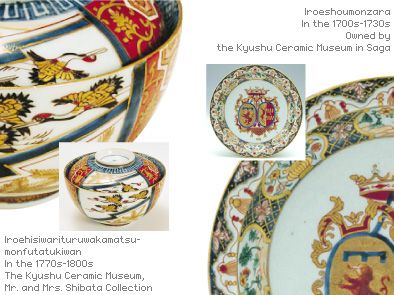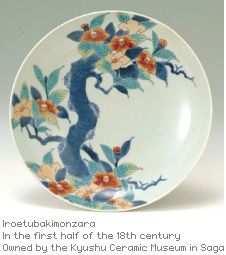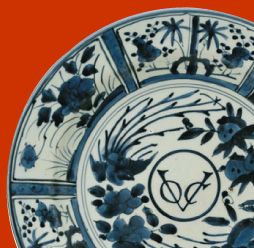

Ko-Imari ware in which bright colors such as red and gold are used reflecting the prosperous and affluent Genroku era.
Ko-Imari literally refers to old Imari ware, especially the Imari ware made in the Edo period.
This type of decorative palette with deep blue underglaze cobalt over which gold, red, green, and yellow enamels are painted, is called the "Ko-Imari style." It is also called "kinrande (gold brocade) Ko-Imari," in which the combination of the colors of cobalt blue, gold, and red is standard.
The "Ko-Imari style was developed in the Genroku era (1688�`1704), gradually taking the place of the traditional Kakiemon style. It was appreciated as much as the Kakiemon style in Europe and exported in large quantities during the Genroku and the Kyoho eras (1716�`1736). Some examples of the style completely decorated with colorful designs are gorgeous and dazzling, reflecting the prosperous Genroku era. The design is characterized by the way of dividing the ware surface with radial lines and karahana-like curves and decorating with madoe and ground patterns alternately. Among the designs are karahana-mon and shishi-botan-mon (lion and peony).

 Nabeshima ware manufactured under close control using a collection of superlative techniques
Nabeshima ware manufactured under close control using a collection of superlative techniques